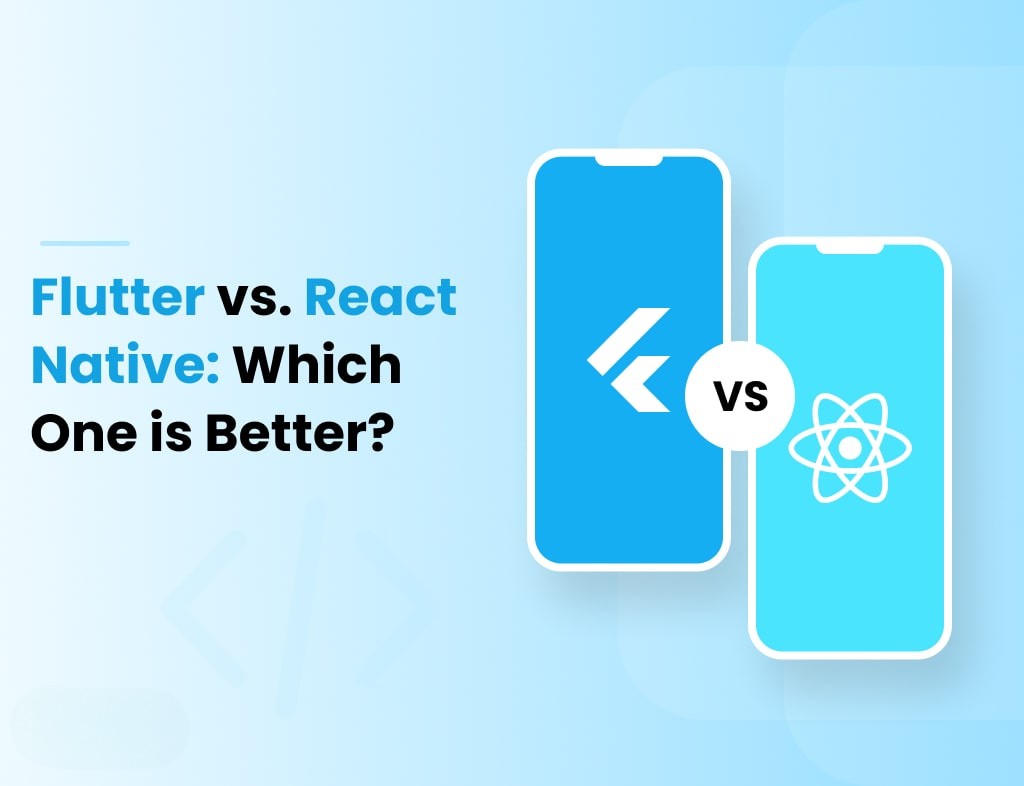Introduction
Cross-platform development is the norm for startups and enterprises in 2025. Companies want to hit the market fast, deliver a seamless user experience, and reduce the cost of development while reaching both Android and iOS users.
The two strongest contenders are Flutter (developed by Google) and React Native (developed by Meta). If you’re a developer choosing where you want to invest your skills this year, this post will set out the major differences, advantages, and disadvantages of both frameworks so you can make the best decision.
1. Popularity & Community
- React Native: React Native has developed a mature ecosystem since its release in 2015, featuring thousands of packages. Facebook, Instagram, and Tesla are among the companies using it. There is robust community support behind it that facilitates troubleshooting and resources.
- Flutter: Flutter was released in 2017 and has gained significant popularity. By 2025, it is the most popular cross-platform framework based on various developer surveys. Google’s support and adoption by large firms like Alibaba, BMW, and eBay have propelled its rise.
2. Performance
- React Native: It makes use of a bridge to pass between JavaScript and native code. Although this is sufficient for most applications, high-performance applications and complex animations could take a delay.
- Flutter: It is compiled to native ARM code with its own renderer, Skia. This architecture is free from the use of a bridge and promises consistent, smooth performance across hardware.
Verdict: Flutter leads in raw performance, particularly for apps with lots of UI and animations.
3. Developer Experience
- React Native: JavaScript (and optionally TypeScript) based, it’s comfortable to millions of web developers. If you already know React for the web, learning React Native is easy.
- Flutter: It is built on Dart, a less popular language than JavaScript. Although Dart is simple to learn, the talent pool and ecosystem are smaller than for JavaScript.
Verdict: React Native is simpler to learn if you already have a web dev background. Flutter takes a slight learning curve but provides a more solid developer experience once you’re at ease.
4. UI & Design
- React Native: It utilizes native components, making apps look native on Android and iOS. But pixel-perfect consistency between platforms may require additional effort.
- Flutter: It makes use of a single rendering engine to make the UI look consistent across devices. It also has Material Design and Cupertino widgets, offering developers complete control over appearance and feel.
Verdict: Flutter offers a more uniform and aesthetically pleasing UI from the very beginning.
5. Ecosystem & Integrations
- React Native: It enjoys the huge JavaScript ecosystem. Third-party library and backend service integration is just as smooth.
- Flutter: Google is seriously working on Flutter’s ecosystem, such as Flutter Web and Flutter Desktop. By 2025, Flutter supports not just mobile but web, Windows, macOS, Linux, and even embedded systems.
Verdict: React Native is perfect for mobile and web startups, whereas Flutter is growing its footprint across several platforms.
6. Industry Adoption in 2025
- React Native: It continues to be favored by businesses that already have JavaScript and React teams in place. It is best suited for businesses that want rapid implementation and simple onboarding.
- Flutter: It is gaining traction among industries that need design consistency and high performance, including fintech, automobiles, and e-commerce. Flutter is also the default UI toolkit for Google’s Fuchsia OS, which is an experimental operating system.
7. Job Opportunities
- React Native: With more postings globally due to its JavaScript base.
- Flutter: There is high demand from startups and businesses developing apps for multiple platforms. Salaries can be decent as there are fewer experienced Flutter developers.
Which One to Learn in 2025?
It depends on your needs:
- If you have JavaScript and React experience as a web developer, the quickest leap is to React Native.
- To build high-performance apps with beautiful UIs on mobile, web, and desktop, Flutter is the best long-term bet.
- If you are considering future-proofing your career, Flutter’s fast growth and backing by Google make it an attractive choice.
Conclusion
In 2025, both Flutter and React Native are great options. There’s no single answer selecting the right framework is a matter of your background and the kind of apps you plan to build.
If you’re new to it all, Flutter’s performance, UI features, and multi-platform support make it the most promising framework to learn. But if you already have some knowledge in JavaScript and you need to be productive soon, React Native is still a great option.





